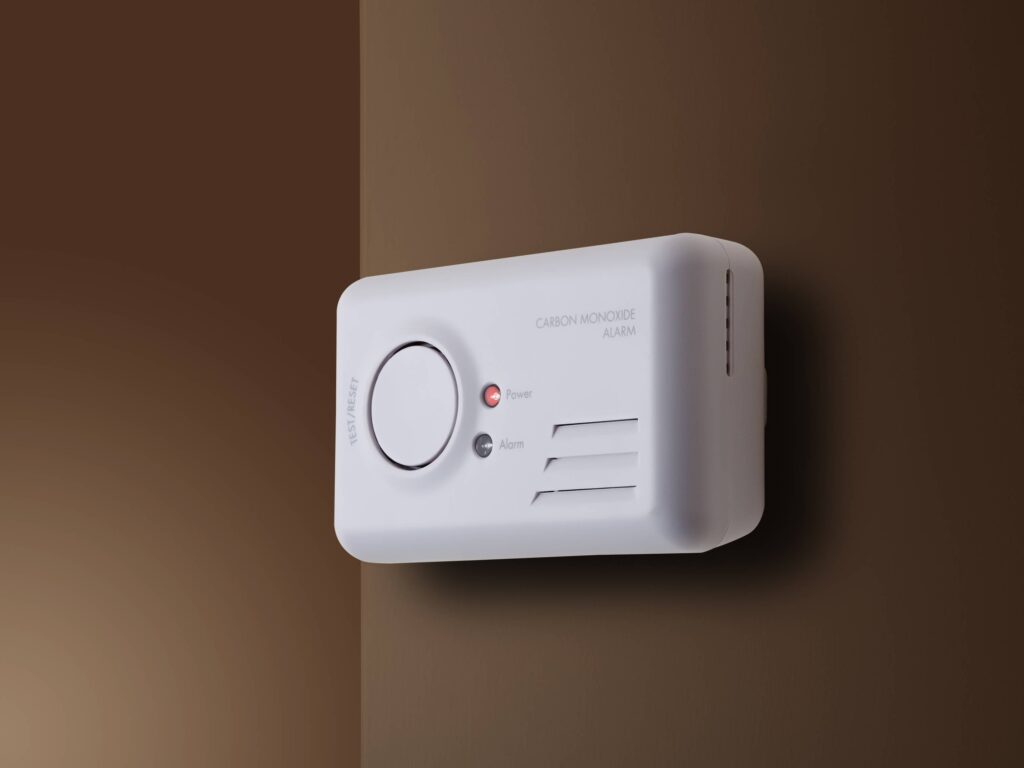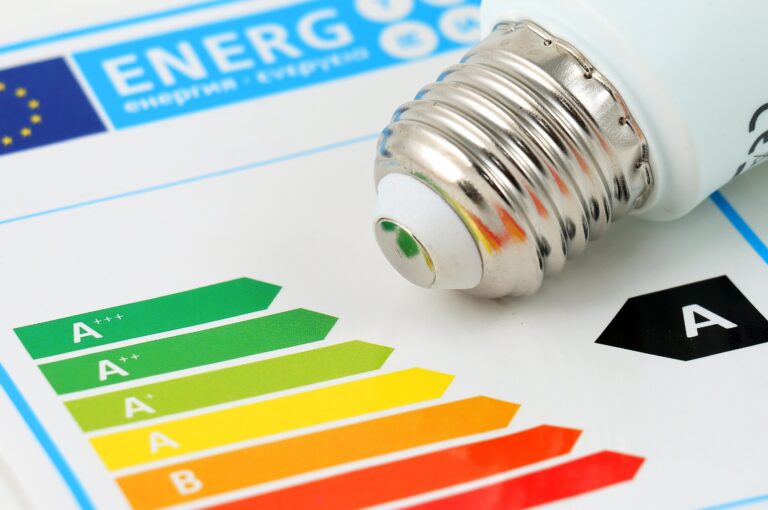Whether you’re a landlord, tenant or homeowner, one of the most important devices to have in your property is a carbon monoxide alarm.
Carbon monoxide poisoning accounts for around 60 deaths in UK homes every year, yet is completely preventable.
One way to protect those living in your property is with a carbon monoxide alarm – and if you’re a landlord, you must have these devices in any room of your rental property where a solid fuel burning appliance is located.
But what are carbon monoxide alarms, how do they work and why do you need one?
Here, we’ll answer all those questions and many, many more…
Types of carbon monoxide detector
A carbon monoxide detector is a device that detects the presence of carbon monoxide in the air and sets off an alarm to alert people.
Using various sensors, the alarms are triggered when carbon monoxide levels reach a certain point.
Types of carbon monoxide detector are:
1. Plug-in carbon monoxide detectors
The main benefit of a carbon monoxide detector that operates by mains power is you’ll never have to worry about changing the batteries.
Many mains powered detectors also have self-charging back-up batteries which kick-in in the event of a power cut.
2. Battery-powered carbon monoxide detectors
Sealed battery carbon monoxide detectors have the battery sealed inside the unit and this can’t be changed. Once the battery has reached the end of its life, the alarm will beep and at this stage the unit should be replaced with a new detector.
Replaceable battery detectors, meanwhile, run on standard batteries that can be replaced as and when required.
3. Smart carbon monoxide detectors
Smart carbon monoxide detectors work in the same way as standard battery powered units.
But as well as an alarm, they also send a notification to your smart phone to alert you to the presence of carbon monoxide in your home.
This can be useful if there’s an alert while you’re out and these alarms are great choices for landlords whose tenants are likely to embrace smart technology.
How do carbon monoxide detectors work?
All carbon monoxide detectors sound an alert when they detect the presence of carbon monoxide in the air.
However, the alarms are triggered in three different ways, depending on the type of detector you have.
1. Biomimetic sensors
A gel in the device changes colour when it absorbs carbon monoxide, which triggers the alarm.
2. Metal oxide semi-conductor sensor
Carbon monoxide compromises the electrical resistance of the device’s circuit, which trips the alarm.
3. Electrochemical sensor
Electrical currents in a chemical solution inside the device change in the presence of carbon monoxide and set off the alarm.
Where should I place a carbon monoxide detector?
Carbon monoxide detectors should be placed in every room with a solid fuel-burning appliance, but also with gas or oil burning appliances, too.
If you’re a landlord, you are legally obligated to place a working carbon monoxide detector in every room that burns solid fuel, with penalty fines of up to £5,000 for non-compliance.
Detectors should also be:
- Placed at least 10 feet away from each fuel-burning appliance
- Placed on a flat surface at head height
- Kept out of cupboards and not placed behind furniture, outside of doors or close to extractor fans
- Kept away from high-condensation areas like bathrooms or cooking hobs
- Tested regularly, with batteries replaced when needed
What causes a carbon monoxide alarm to go off?
If your carbon monoxide alarm is sounding, the best course of action is to assume it has correctly detected carbon monoxide in your property.
However, there are other factors that can cause a detector to sound its alarm, including:
- Carbon monoxide ‘seepage’ from a neighbouring property
- A faulty or ageing detector
- Excessive moisture from bathrooms
- Smoking in a poorly ventilated room
- Fumes from traffic on busy roads close to properties
What do I do if my carbon monoxide alarm goes off?
If your carbon monoxide alarm sounds, assume it’s a genuine alert and do the following:
- Open doors and windows to ventilate your property
- Turn off all fuel burning appliances if safe to do so
- Leave the property and notify neighbouring properties if in a terrace or semi-detached home
- Call Gas Emergency Services on 0800 111 999
Should my carbon monoxide detector flash red?
Depending on the model of carbon monoxide detector you have, a flashing red light could indicate:
- Carbon monoxide is present if light flashes alongside a sounding alarm
- The unit is receiving battery power
Will a carbon monoxide detector detect a gas leak?
Carbon monoxide detectors aren’t designed to detect gas leaks in properties.
While gas can generally be detected by sense of smell, carbon monoxide is odourless, which is why it’s dubbed a ‘silent killer’ and only the use of a detector can raise the alarm quickly.
Do I really need a carbon monoxide detector?
If you’re a landlord, then you’re legally obliged to provide a working carbon monoxide detector in each room that houses a solid fuel burning appliance.
Those appliances could include:
- Coal fires
- Wood-burning stoves
While it’s not a legal requirement to provide a carbon monoxide detector for gas-burning appliances, like boilers and gas fires, it is recommended that landlords do this, as these appliances can also emit carbon monoxide.
For homeowners, carbon monoxide detectors should also be used in rooms where solid fuel is burned, but also where gas appliances are present, too.
Does a carbon monoxide detector go off continuously?
Most carbon monoxide detectors will continue to sound their alarm until the level of carbon monoxide in the air drops back to an undetectable level.
Most detectors beep four times followed by a pause and continue to do this while carbon monoxide is present.
On most models of detector, a short chirp every minute means your alarm’s batteries are running low and should be changed, while five beeps every minute means your alarm has reached the end of its life and needs to be changed.
Can carbon monoxide detectors go off for no reason?
Carbon monoxide detectors generally don’t go off for ‘no reason’ – it’s just a case of working out what the reason is.
Read your alarm’s instructions so you’re aware of what the different beep combinations mean.
That will help you determine whether your alarm is sounding because of carbon monoxide, or because its batteries need replacing or it’s coming to the end of its life.
How long do carbon monoxide detectors last?
Carbon monoxide detectors generally last between five and 10 years and should, as a rule, be replaced every five years.
During that time, detectors should be tested regularly, and the batteries changed when required.
Sealed battery carbon monoxide detector batteries can last for up to 10 years before the unit needs to be replaced.
For replaceable battery units, the batteries usually need to be replaced every two to three years with the unit itself lasting between five and 10 years.
Like most units, smart carbon monoxide detectors also last for between five and 10 years.
How do you test if your carbon monoxide detector is working?
Carbon monoxide detectors have a test button, which should be used every month to be certain your alarm is functioning correctly.
You should also be able to clearly hear the alarm from all bedrooms in your property, for peace of mind that everyone would wake should the alarm sound during the night.
What does 888 mean on a carbon monoxide detector?
If you’re using a slightly more advanced carbon monoxide detector that shows an air quality reading, you might see the figure 888 on the screen when you test the device.
This is not a reading, and the number is shown purely for device testing purposes.




